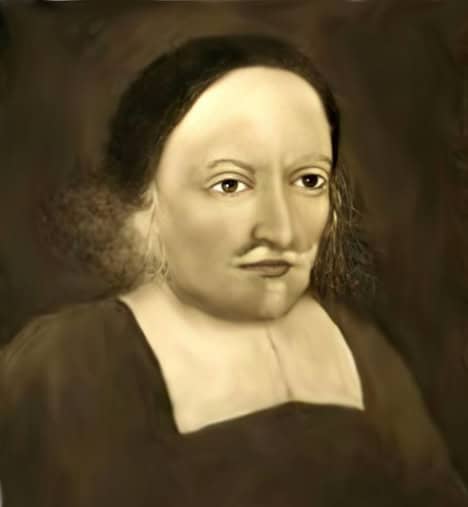By Inna Babitskaya
On May 1, 1629, the Massachusetts Bay Company in England voted to build a large town and, when the settlers would choose a site, “no man shall presume to build his house in any other place, unless it be in the Massachusetts Bay.”
“The Company had instructed the three ministers they had engaged to come over, namely, Messrs. Higginson, Skelton, and Bright, that in case they could not agree who should ‘inhabit at Massachusetts-Bay,’ they should ‘make choice of one of the three by lot,’ and he, on whom the lot should fall, should ‘go with his family to perform that work.’” In 1629, Rev. Francis Higginson (1588–1630), a prominent Puritan preacher, led the first large group of settlers (the Higginson Fleet) to the Massachusetts Bay Colony. As a famous Captain John Smith, the first explorer of the future Massachusetts Bay Colony, wrote in his book “The True Travels, Adventures, and Observations of Captain John Smith,” “Now in this year 1629, a great company of people [the Higginson Fleet] of good rank, zeal, means, and quality have made a great stock, and with six good ships in the months of April and May, they set sail from Thames for the Bay of the Massachusetts, otherwise called Charles River.”
Because of the pirate threat and the undeclared war with Spain, all ships carried armor. The Four Sisters, Roger Harman, master, carried 14 cannon, “many cattle with passengers & provision.” Among its passengers were Walter Palmer and Abraham Palmer.
As Rev. Higginson wrote in his book, “One of the ships, the George Bonaventure, was a strong vessel of about three hundred tons burden, with twenty pieces of ordnance, and manned by about thirty mariners. It was commanded by Thomas Cox and carried fifty-two planters and provisions, twelve mares, thirty kine, and some goats. Among the passengers were Rev. Samuel Skelton and his family, consisting of his wife Susanna and three children: Samuel, aged six; Susanna, four; and Mary, nearly two.”
Rev. Samuel Skelton (1592–1644) served as curate of Sempringham, Lincolnshire, and chaplain of the Earl of Lincoln. He was “a man of gracious speech, full of faith, and furnished by the Lord with gifts from above,” reserved “in his manners,” and had respectable “talents and attainments.” Gov. John Endecott, who admired Skelton and considered him his spiritual father, invited Skelton to serve as a minister of the colony. Skelton became the first pastor of the First Church of Salem.
“The Talbot, Thomas Beecher, master, was also a strong ship of three hundred tons, with nineteen pieces of ordnance, and manned by thirty mariners. It carried about one hundred planters and, as freight, six goats, five great pieces of ordnance, oatmeal, pease, and all kinds of munitions and provisions sufficient for the plantation for a year. Several servants of the Pilgrims came in this vessel at this time, and also Mr. Higginson and his family, consisting of his wife Ann and children, John, the eldest, aged twelve, Francis, Timothy, Theophilus, Samuel, Mary, Ann, Charles, and Neophytus.”
After his arrival in Salem, Rev. Francis Higginson became the teacher of the congregation. “A zealous and profitable preacher, he drew up a confession of faith.” His voyage journal and diary, in which he gave very detailed descriptions of the journey, colonial lands and nature, were published in 1630. Because of his weak health, the hardships during the first winter and the exhausting fever, he died in 1630.
Capt. Thomas Beecher (bef. 1600–1637) from Whitechapel, England, became one of the early members of the church of Boston and was admitted freeman on November 6, 1632. He settled at Charlestown and signed the covenant of the Charlestown church on Nov. 2, 1632. He was one of the first selectmen of Charlestown and one of its representatives at the first Court of Deputies in May 1634, and in 1635-36. In May 1635, he was appointed by the General Court a captain of the fort at Castle Island.
“The Lion’s Whelp, John Gibbs, master, was a ship of one hundred and twenty tons, well-proportioned and fast, carrying eight pieces of ordnance, six fishermen, and about forty planters, principally of Dorsetshire and Somersetshire, besides the mariners and provisions and four goats. Rev. Francis Bright and his family, consisting of his wife, two children, and one maid servant, were among the passengers.”
The Mayflower (not the same ship that came to Plymouth in 1620, master William Peirce) carried 14 guns, 35 passengers from Leiden, Holland.
The Pilgrim, William Woolrige, master, was a small ship with four guns that carried supplies only. In August 1629, the ship “was seized off Canada by Captain Daniell of Dieppe, who stripped her of her lading. On October 31, 1629, as she was returning to England, she ran into foul weather off the Scilly Isles, and her masts and sails were cut down to save her.”
The Higginson Fleet set sail on April 24–May 1, 1629, arriving in Salem harbor on June 24-29, 1629. The newcomers were greeted by a small group of settlers led by John Endecott. As Rev. Higginson said, “There are in all of us both old and new planters about three hundred, whereof two hundred are settled at Neihum-kek, now called Salem, and the rest have planted themselves at Masathulets [Massachusetts] Bay, beginning to build a towne there, which wee doe call Cheriton, or Charles Towne.”
To be continued…
(Inna Babitskaya is a Malden historian, member of Malden Historical Commission and author of historical books “From Maldon to Malden,” “Time of Converse” and “Fellsmere Park – Emerald of Malden.”)



